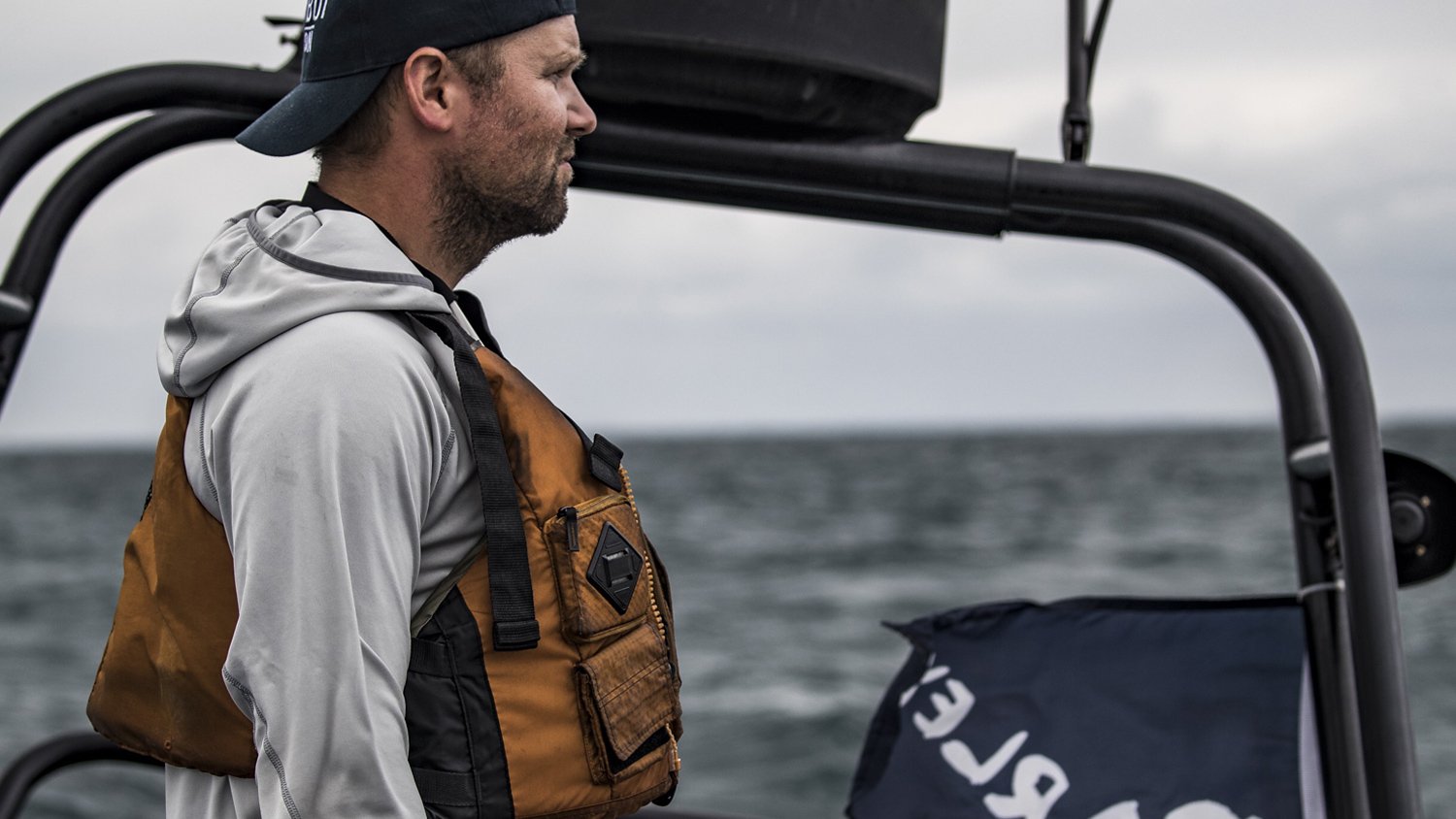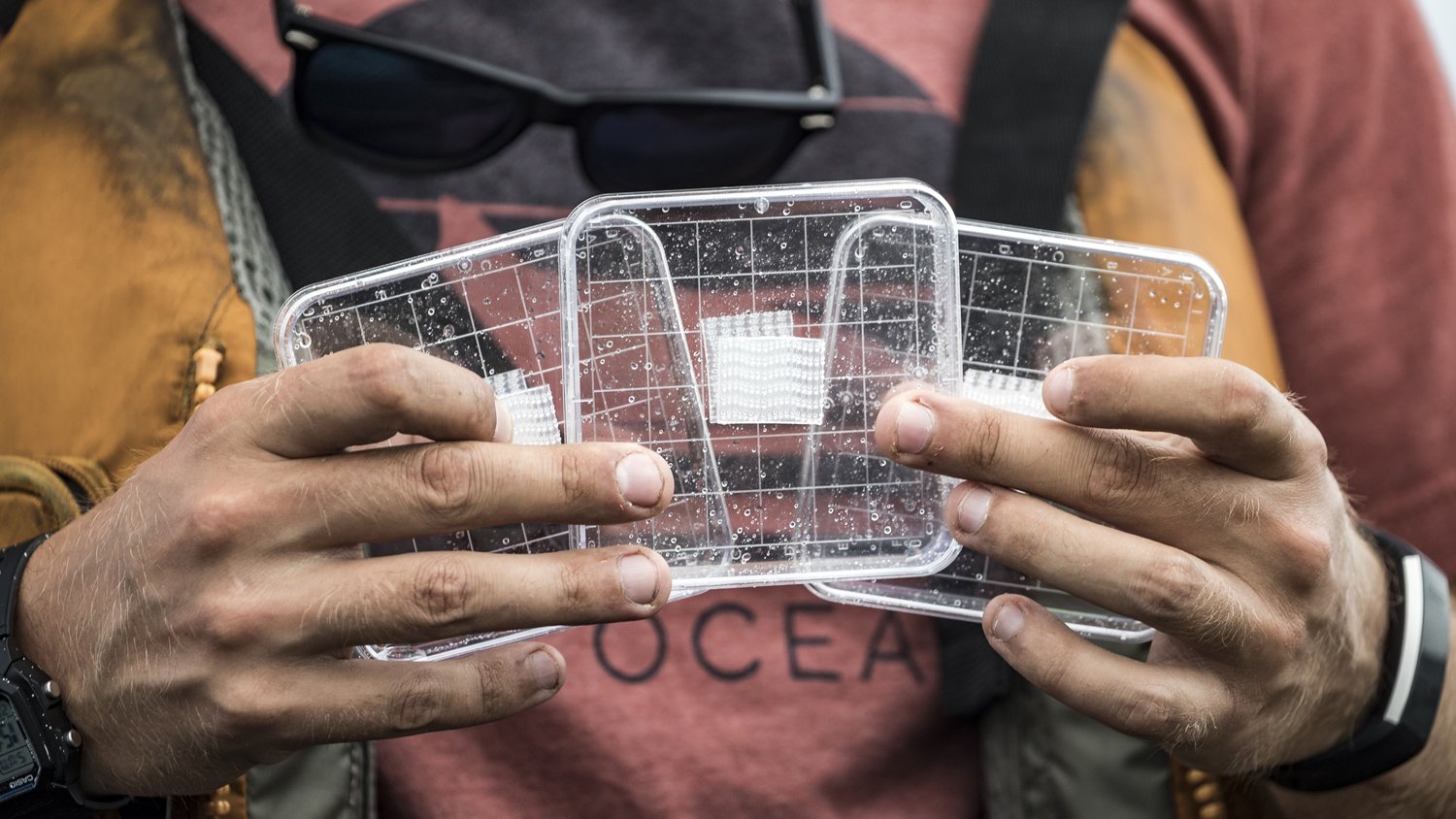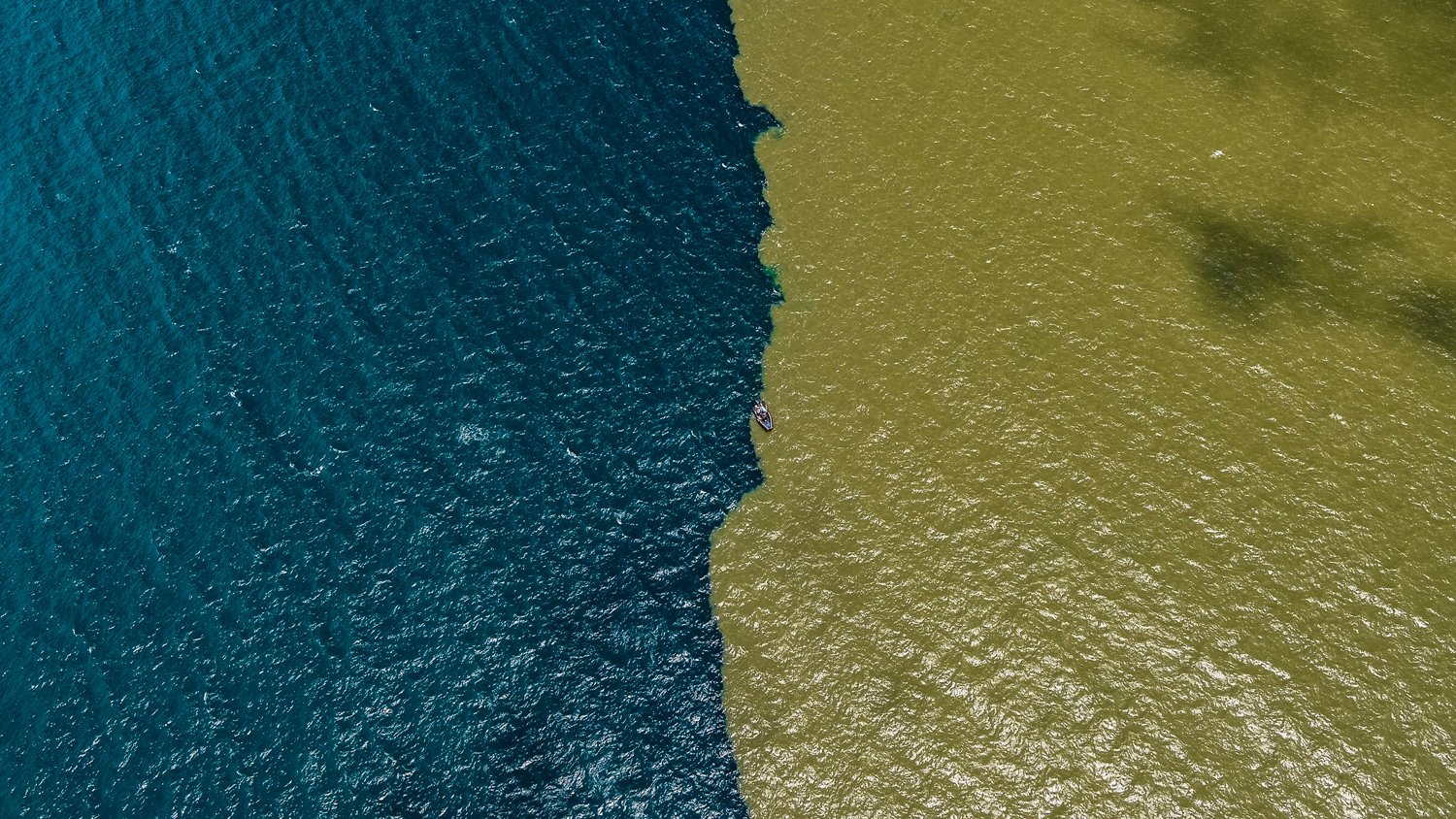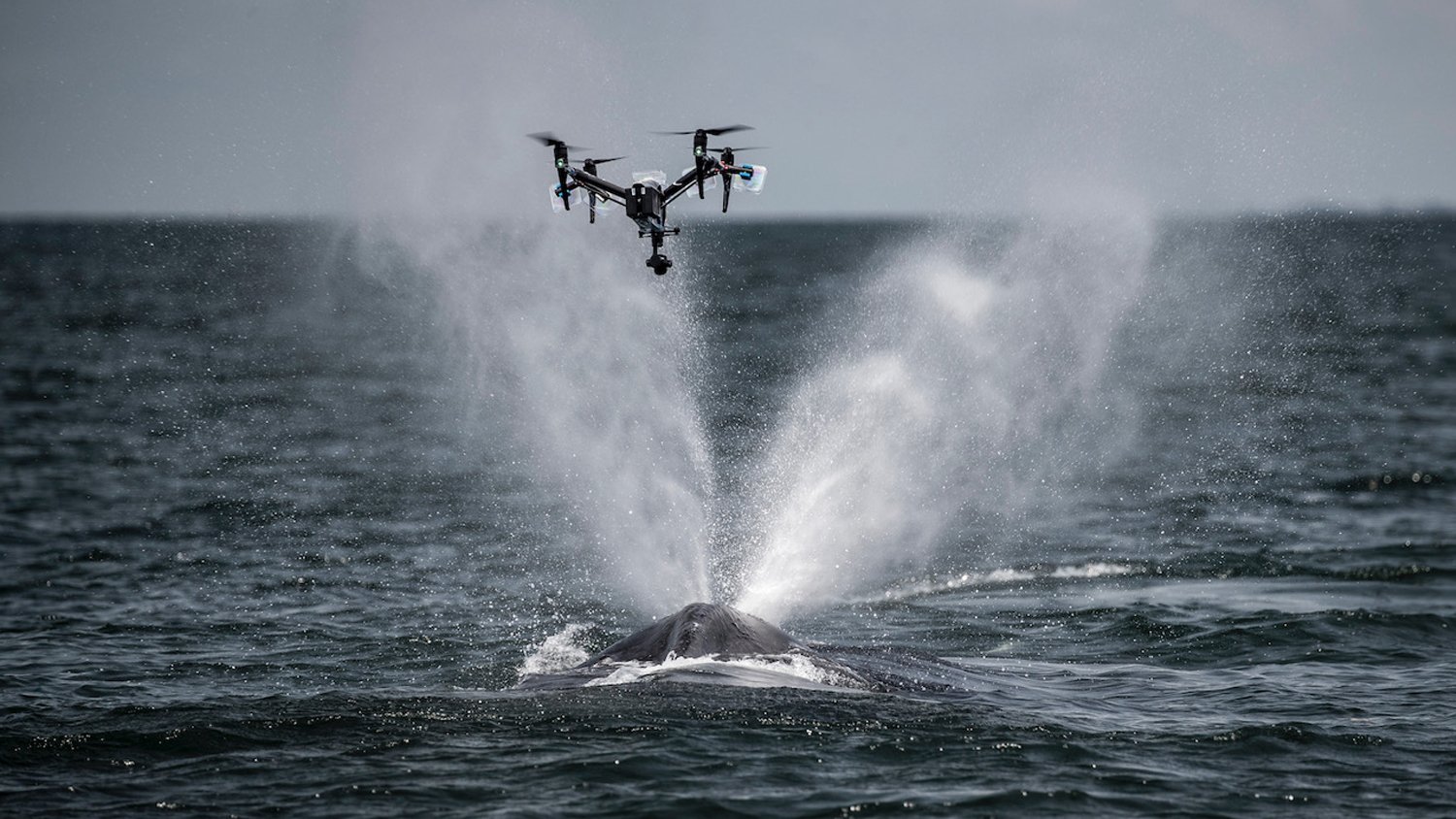Parley SnotBot® diaries: Gabon
The Parley SnotBot® team reports back from their most far-flung mission yet
Photography by Christian Miller
Deep in the world’s borderless oceans, whales travel across vast distances and use sound to communicate with other pods. Off the coast of West Africa, for example, humpback whales arrive to breed between June and November before returning to the rich feeding grounds of the Southern Ocean, thousands of miles to the south. On their most far-flung expedition to date, the Parley SnotBot® crew travelled to Gabon to study these ocean giants, train local conservation groups and record the sounds of whale song. Here are some excerpts from project founder and Chief Scientist Iain Kerr’s diary.
DAY 1
Gabon is a country whose whale populations were decimated by commercial whaling but they are thought to be on the rebound. It’s not an easy place to get to, so its whales have not seen the type of attention that they might see in many areas of the world. To me, this is the epitome of a perfect Parley SnotBot® location.
Gabon has more wildlife preserves than any country in Africa and they have recently been incorporating their marine resources into their park systems. The Gabonese government have told us that we will be the first research group to work in their newly-designated Marine Protected Area. We plan to work with humpback whales but sperm whales and right whales have been seen at this location – so fingers crossed. We will be working with local conservation authorities ANPN and CENAREST and also Gabon's space agency, and the BBC will be joining us to film.
While we have taken SnotBot® to three countries already Gabon is certainly the end of the road less travelled. The old commercial whaling pilot charts show sperm whales in these waters and because the rainforest runs right down into the sea both hippos and elephants can be seen in the surf. I am hoping that this will be one of the most productive locations we have visited. There is so little known about the whale populations here, so almost any data we get will be valuable.
DAY 3
Our first two days on the water in Gabon have not gone as well as we hoped. It has been incredibly windy, meaning it is hard to see whale blows, hard to collect samples and hard to keep all of our equipment and crew dry. We have collected six samples in what only could be called extreme conditions. I had to fly lower than my usual 10 feet above the whales since the blows were laid flat by the wind, but Parley SnotBot®’s Director of Photography, Christian Miller, got some spectacular shots of this process and also a baby humpback floating above its mother.
In homage to Ocean Alliance president and founder, Dr. Roger Payne, we did manage to make a couple of short humpback whale recordings today. There is nothing like putting on headphones and hearing a cacophony of whales singing right under your boat. I am not a mystical man, but this is a magical experience.
LISTEN TO IAIN’S WHALE RECORDINGS HERE
DAY 10
I always get great joy from the unintended consequences of our work. In the Galapagos we exposed an illegal sea cucumber fishery and in Papua New Guinea we were the catalyst for creating a marine sanctuary. Now, in Gabon, we may have helped to discover an illegal gold mining operation.
Early on in the trip we came across an area of muddy fresh water that was sitting on top of the salt water – a pretty spectacular sight. Because it’s not the rainy season here, the water shouldn’t be this color. We shared our photos with some ANPN officials and they were concerned that this was likely evidence of illegal gold mining, so a plane is going up to see if they can track this to the source. Wet wash gold mining is notorious for the environmental devastation it causes. We also saw a barge loaded with lumber heading offshore, the officials on our boat said that there were no facilities in the direction the barge was going, so it was likely the result of illegal logging or illegal exporting or both. So this was also called in.
POST-TRIP RECAP
We are now back in the USA after what has been the most logistically challenging and the most successful Parley SnotBot® expedition to date. Working with the Gabonese government and NGOs we collected 55 Exhaled Breath Condensate (snot) samples, shot photogrammetry images, tested a new photogrammetry rig, recorded whale songs and took hundreds of photos and behavioral videos of a whale population about which very little is known.
We did come back a few drones short – due to an improper propeller attachment an Inspire 2 dropped into the water right after take-off and we gave a Mavic Pro kit to our friends at ANPN (the Gabonese Wildlife Conservation authority). We conducted a number of flight training sessions with our ANPN friends and Parley SnotBot®’s Robotics Engineer Chris Zadra taught a photogrammetry session.
ANPN are very excited about the potential use of drones for wildlife conservation both ashore and afloat. As part of our 'Democratizing Science with Drones Initiative' we have now left drones and hard-won operational and scientific protocols in Argentina, Alaska, Mexico and Gabon. Until our next expedition, I wish you fair winds and a following sea.
– Iain Kerr, Parley SnotBot® Chief Scientist

















